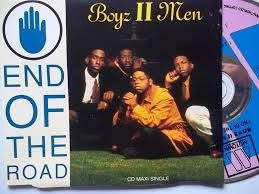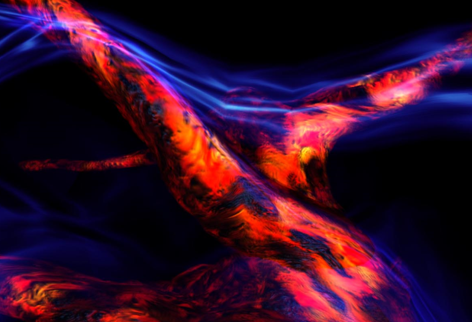Stygian Sentinel 9
Issue #9, August 31st 2015
25 Years On[edit]
It’s been a quarter century since the original Underworlds were released. Yikes! This seems a good opportunity to reflect on what has changed over the years in game development, and what has remained much the same. First, 3 ways it has changed:
- Billboard’s Top Pop Song of Past Year
PC’s Have Come a LONG Way
The original Underworlds were designed to run on 20mhz 386 processor class PC’s. The smartphone in your pocket would crush a PC of that era without breaking a sweat.
These PC’s also lacked any sort of graphics card. You had to do all the rendering in software. That was a huge hurdle to doing real-time 3D texture mapping. Even with some super clever code running in optimized assembly language, we could barely achieve a playable framerate.
In some ways having these performance constraints was helpful, as it compelled us to find creative work-arounds. For instance, there was no way to render fast enough an over-the-shoulder view that would show the player’s character in the foreground and world beyond that. Solution was first-person view, which ended up working well for us, and many games to follow.
Today’s PC’s are ludicrously powerful in comparison. Graphics cards and modern game engines now provide all the building blocks to do sophisticated 3D rendering. The focus has moved from simply trying to get 3D to run, to tweaking the higher end bits of the rendering pipeline to achieve refinements on advanced visual effects. Like getting the fur on that creature to look even more natural than it did in a game from a couple of years ago.
Another notable evolution in the PC hardware is advanced displays and peripherals. The original Underworlds worked with just a keyboard, optionally a mouse if you had one. And the display was a mere 256 colors 640x480 pixels.
Today we have 4K displays. Then there is VR and AR coming into play, which are paradigm shifts in how players get immersed. Not just with their visuals, but with interfaces such as ‘wands’ that enable a more tactile experience in how you reach out and interact with the game world.
This level of incredible fidelity and immersion compels us to evolve our thinking on how we build games. For example, we can now consider mimicking the sort of physical manipulations a thief would do to pick a lock, instead of abstracting it as a mini-game.
Games have become HUGE
Ultima Underworld fit on 6MB of floppy disk space. For a modern PC game 6GB is not uncommon, 1000x bigger. Where nearly all of the extra space has gone is into making dramatically higher fidelity visuals and audio. Supporting 4K visuals takes a LOT of pixels, as do high-polygon 3D creature models that have fluid animations.
These levels of fidelity facilitate creating beautiful and immersive 3D worlds. But it can take massive effort to build the assets. A modern big-budget 3D game can readily allocate 150 or more person years just to craft the visual assets. That’s on par with the effort it took to build a medieval castle!
Big-budget does not mesh with Indie games, so we’re compelled to be clever in how we get the best visuals without having a small army to throw at the task. It’s a different challenge than what we faced years ago trying to get a primitive PC to doing texture mapping, but it likewise gives rise to creative solutions.
Game Market has become Crowded
Today there are far more new games coming out each month than when Ultima Underworld released. Not just more PC and console games, but a flurry of games for platforms that did not exist in 1992, such as web and mobile.
So much noise to cut through and find the gems!
Many of the big game publishers cut through the clutter by doubling down on their proven franchises. That approach can work fine for the next iteration of Madden or Call of Duty.
This approach is rarely an option for an Indie studio. They lack the resources to do a marketing blitz to reach the mass market, and rarely hold a massively successful franchise to leverage. Indies rely much more on organic discovery. That’s a big challenge in a crowded market. A few Indie games will break out this way, perhaps one in fifty.
With Underworld we do have a beloved PC franchise, which gives us a leg up. There are also an array of social tools to help spread the word, including Kickstarter. Still it’s an everyday challenge to get the word out. You, our fans, can be the biggest help.
- Billboard’s Top Pop Song of 1992
Next, 3 ways game development is the same, more-or-less, as it was a quarter century ago:
Great Teams make Great Games
The best way to stack the odds that you’ll deliver a great game is to have a great team building it. A great team is not some collection of ‘super stars’. A great team will have:
- A shared, deep passion for making the game, along with a dogged determination to make the game great. If you set the bar at less than great, nearly always you’ll deliver less than great.
- The skills to pull off the particular game they are building. Genius helps, but no team is filled with super stars. It’s more about having the right mix of competence and creativity among the team members.
- A team that can learn and grow. Making a great games means regularly encountering new challenges thrown your way. To tackle the challenges you frequently need to stretch and try new solutions.
Trust your Vision & Be Open to Taking Creative Risks
Timid teams don’t make great games. You need a strong vision for what you’re building, and have faith in your vision to fight to see it through. With games that stretch creative boundaries, you will encounter doubters who will question a game’s viability. A first-person sneaker… that will never work! Yet Thief worked.
Part of trusting your vision is a willingness to take certain creative risks. To experiment and try features that may or may not pan out. That’s how you have a shot at reaching for something truly innovative.
Iterate & Listen
As much as trusting your vision is essential, this needs to be tempered by keen aware of what is actually working well in the game as the pieces are coming together during development. Regularly testing prototypes of the game to see what is working well, and what is not so much. Then making changes, and testing again, and again.
This takes a critical eye of the team. These days we can also invite in the fans to get their feedback. With Kickstarter and access to prototype and Alpha build, we can get thousands of eyeballs on the game as it’s coming together. Ultimately our fans are going to confirm if we’ve made a great game for them, so we need to listen hard. This was just as true 25 years ago, although we have far better tools to make it happen now.
Paul
Other News[edit]
We’re deep in the making the first playable prototype for Underworld Ascendant, which we’ll be ready to share with fans this fall. Ahead of that we wanted to play a fun game with a sneak peek.
Above is a zoomed-in section of a structure that is in one of the areas of the playable prototype. Can you guess what it is? Hint, it’s hot, and something you’d only find in a fantasy underworld. Post your answer on our forums here. We’ll randomly pick one person from everyone who posts a guess and gift them an Underworld Ascendant t-shirt!
The OtherSide Team



